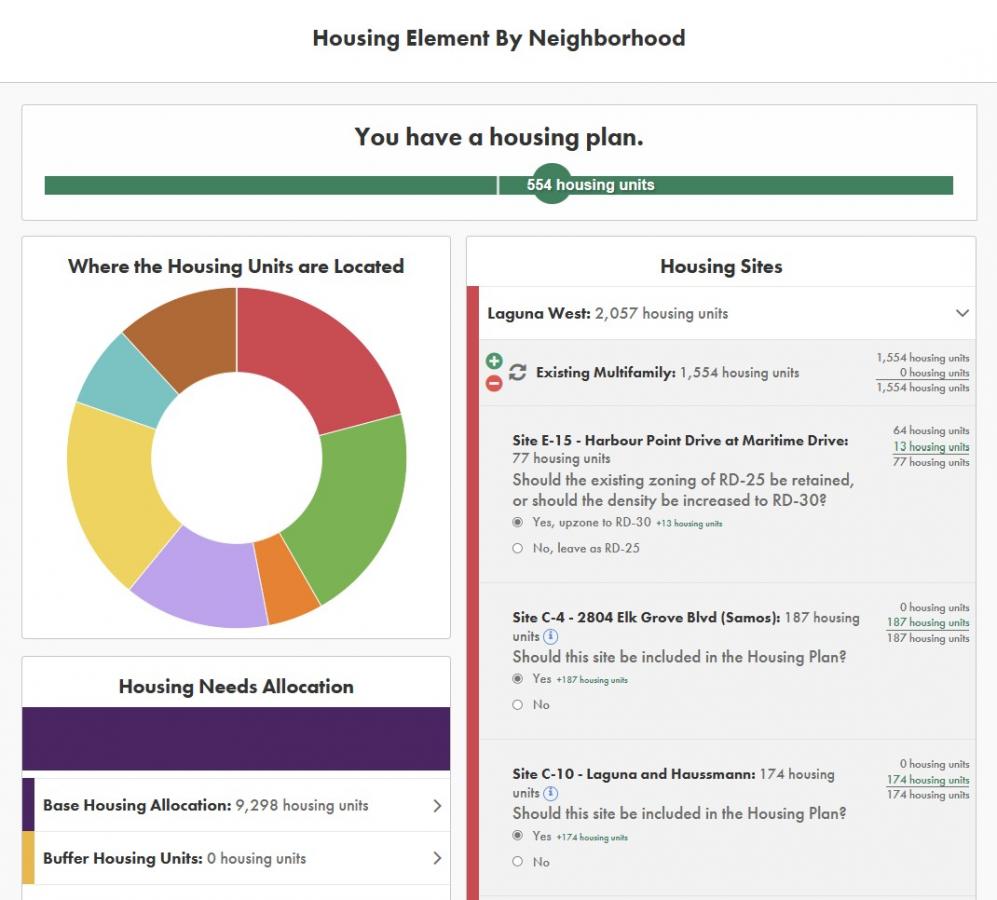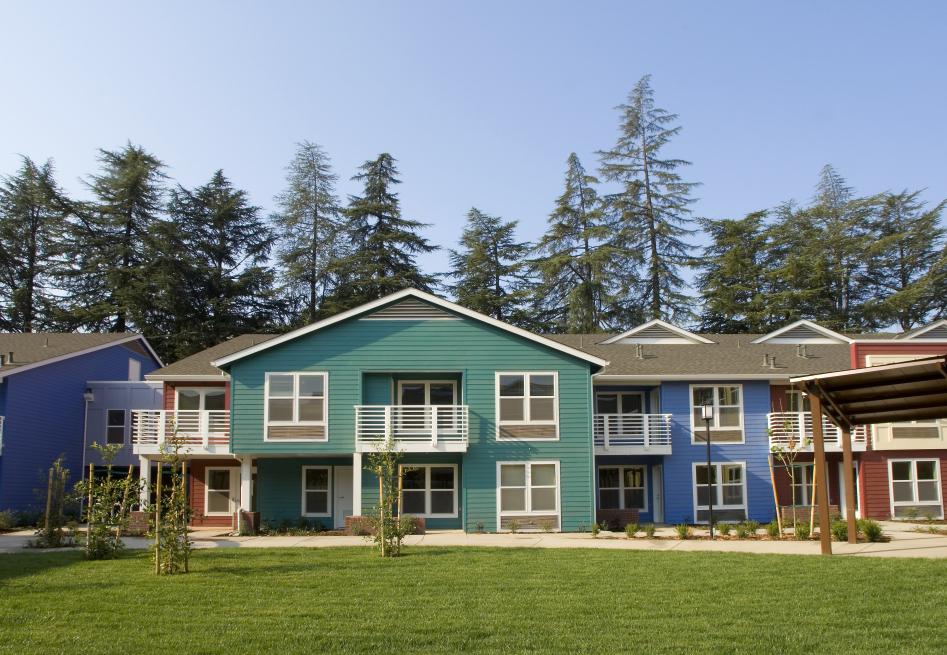Elk Grove and Chico use technology to increase public engagement on important housing decisions
Lisa Yarbrough works at KP Public Affairs and is contributing editor of Western City; she can be reached at lyarbrough@ka-pow.com
For many cities, a key component of addressing the affordable housing crisis includes planning for more high-density projects. However, cities must also ensure that community insight and feedback are front and center when deciding how and where affordable housing is constructed. Two Northern California cities — Elk Grove and Chico — have taken civic engagement to a whole new level. When their typical, in-person community outreach approach was uprooted by the pandemic, both cities quickly developed interactive digital tools that weave community input into policymaking. Their creative outreach strategies have helped city leaders ensure that their zoning policies, partnerships, and resource allocations are guided by community needs and priorities.
Elk Grove’s interactive website enables residents to create their own housing plan
Going into 2020, the city of Elk Grove had a series of town halls planned to engage residents in their Housing Element update, which is part of the city’s General Plan and provides an analysis of a community’s housing needs for all income levels. Elk Grove is required by state law to identify enough sites for 4,265 housing units, as well as some additional sites in case the proposed ones do not work out.
When the pandemic hit, the city switched gears, quickly pivoting to webinars and virtual presentations. City staff also used the stay-at-home orders to increase their digital footprint and developed an interactive webpage where residents could create their own housing plans. The website allowed residents and stakeholders to see existing low-income housing sites in the city and review potential sites targeted for low- and very low-income households. It also gave residents an opportunity to provide feedback on the sites, specify if they supported increasing densities at current sites, and indicate whether or not they supported the proposed locations. The website was user-friendly and included information about how many units could be built at each site and exactly where they would be located.
“The website we created allowed residents to go through the same thought process as staff, the Planning Commission, and city council in selecting sites with enough unit potential to meet our Regional Housing Needs Allocation,” said Director of Strategic Planning and Innovation Christopher Jordan.
In order to provide updates and encourage participation, the city published articles in its bimonthly newsletter and promoted the website through social media channels and email. Staff also presented the project to the Planning Commission and city council early in the process to generate community discussion.
The site received nearly 1,000 visitors over the course of nine months and received mostly positive feedback. Some residents only wanted to comment on one or two housing sites closest to them and not all of the 40 sites being considered as part of the housing plan. City staff accepted their feedback through other channels and incorporated it into their recommendations to the city council.
“This is a complex process with a lot of tradeoffs,” continued Jordan. “We wanted residents to understand that it wasn’t just about the site around the corner from their home but about how all the sites work together to form a system of units that meet the needs of our community.”
The website was available from June 2020 through February 2021 and the Elk Grove City Council adopted its Housing Element in May 2021. Ultimately, only one site required extensive discussion and the council was easily able to make adjustments. The city is currently working through the state’s certification process for its Housing Element, which it hopes to have finalized soon.
Chico engages residents in a collaborative process to identify housing needs and set goals
The city of Chico is also updating its Housing Element, which will cover the planning period of 2022-2030. Similar to Elk Grove, Chico developed a Housing Element website to serve as a central hub where residents can provide input, and learn about the plan and dates for community meetings and the timeline for decision-making.
Understanding that meaningful community engagement would need to happen outside of typical in-person outreach, the city worked hard to provide interactive virtual engagement opportunities. Guided by principles of ensuring accessible information, transparent communication, equitable engagement, and constructive outreach, Chico encouraged the community to share their input on local housing needs and goals through online surveys. They have also hosted informational webinars and virtual meetings, sent regular email updates, and posted information about the Housing Element process on the city’s Facebook, Instagram, and Twitter pages.
City staff also provide English, Spanish, and closed captioning options for virtual meetings, which include polls, Q&A and chat capabilities, breakout rooms, and downloadable slides so that community members can engage with the material in a way that is comfortable for them.
Nearly 200 residents participated in the two virtual community meetings held to date; 784 residents across a wide range of demographics completed the first community survey that was offered in Spanish and English. Survey results showed 90% of residents who attended the second community meeting felt like they were able to connect with their community during the virtual event.
“While the housing crisis has affected cities throughout California, Chico’s housing market was hit extra hard by the Camp Fire,” said Chico Mayor Andrew Coolidge. “We have a strong need to identify workable solutions for a variety of housing types in Chico, and the current update to our Housing Element comes at an opportune time. Although the constraints of COVID-19limited in-person public meetings, our team was able to quickly pivot and create an innovative outreach plan to engage our community.”
Local community groups invested in housing issues used the surveys and meetings as venues to speak directly to the city and often promoted them to their organizing circles as ways to make positive change in the community. As Chico moves through the Housing Element process — which is slated to culminate in May 2022 — the city is committed to ensuring broad public participation from all residents and stakeholders, including underserved communities, local non-profits, and the business community.
Digital, interactive tools help encourage residents become informed and stay engaged
Keeping residents and stakeholders informed and engaged in the Housing Element Update process has helped both Elk Grove and Chico develop an equitable approach to planning and building affordable housing. These two cities are two prime examples of municipalities that have taken a bottoms-up approach to civic engagement that helps ensure there is a diverse mix of housing across all income levels. By devising creative outreach strategies and leveraging technology, both cities are demonstrating their commitment to developing housing policies and allocating resources based on community feedback, needs, and priorities.



